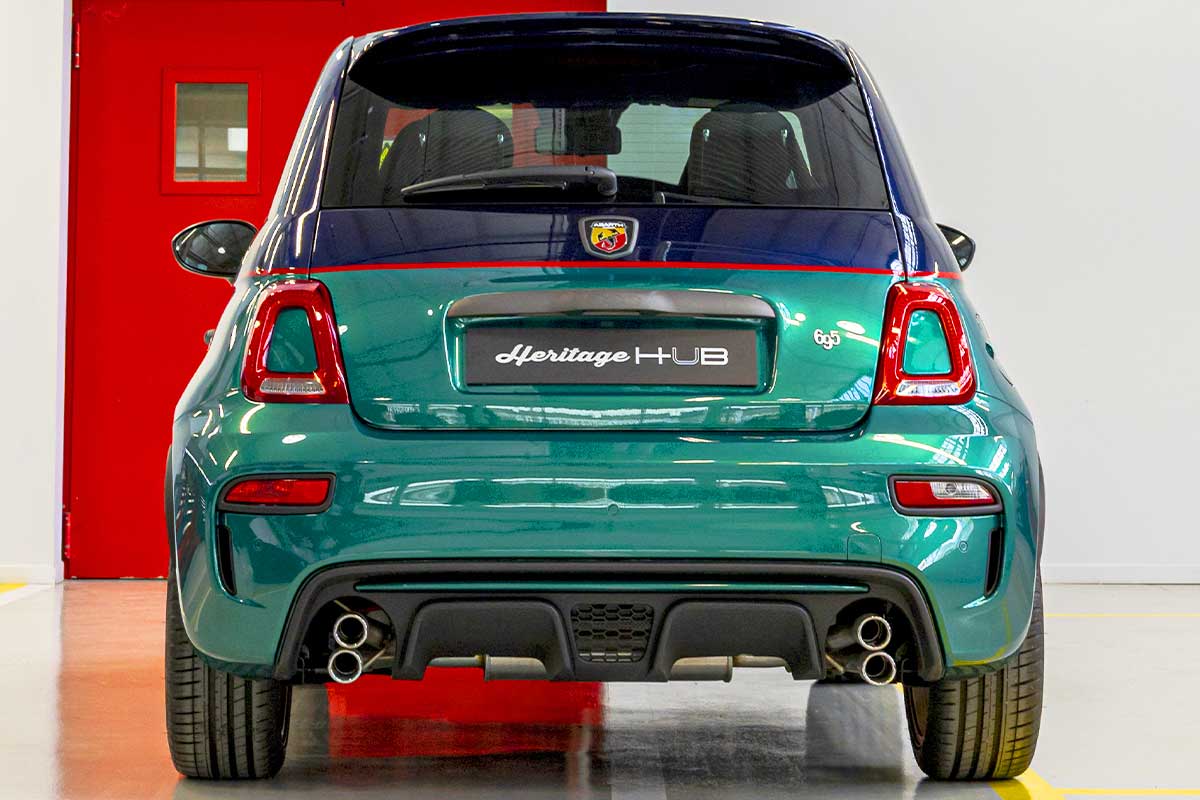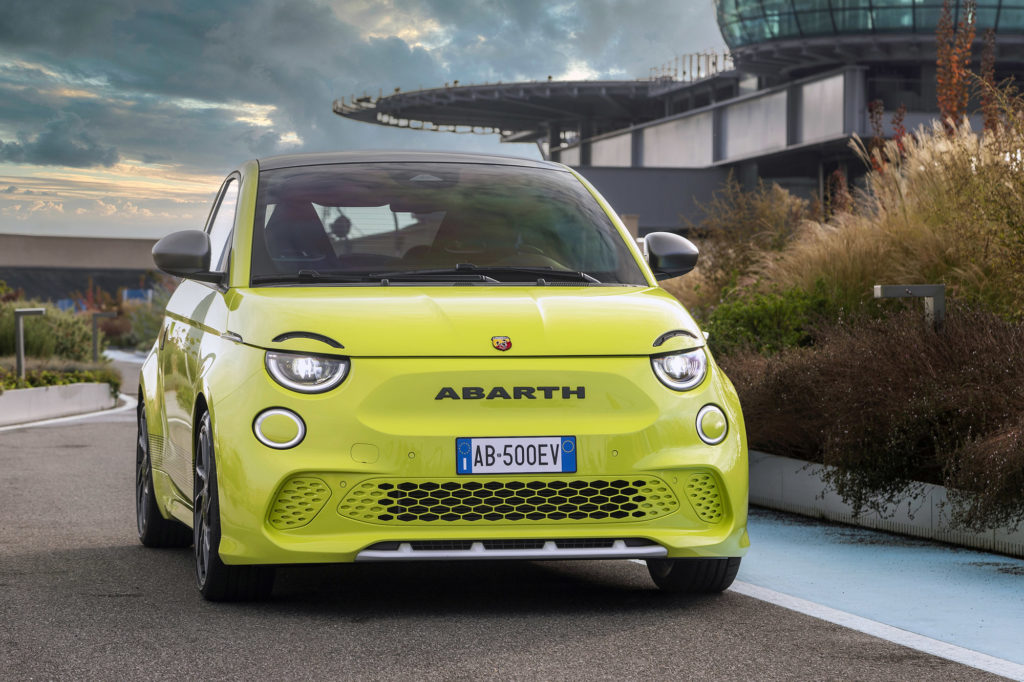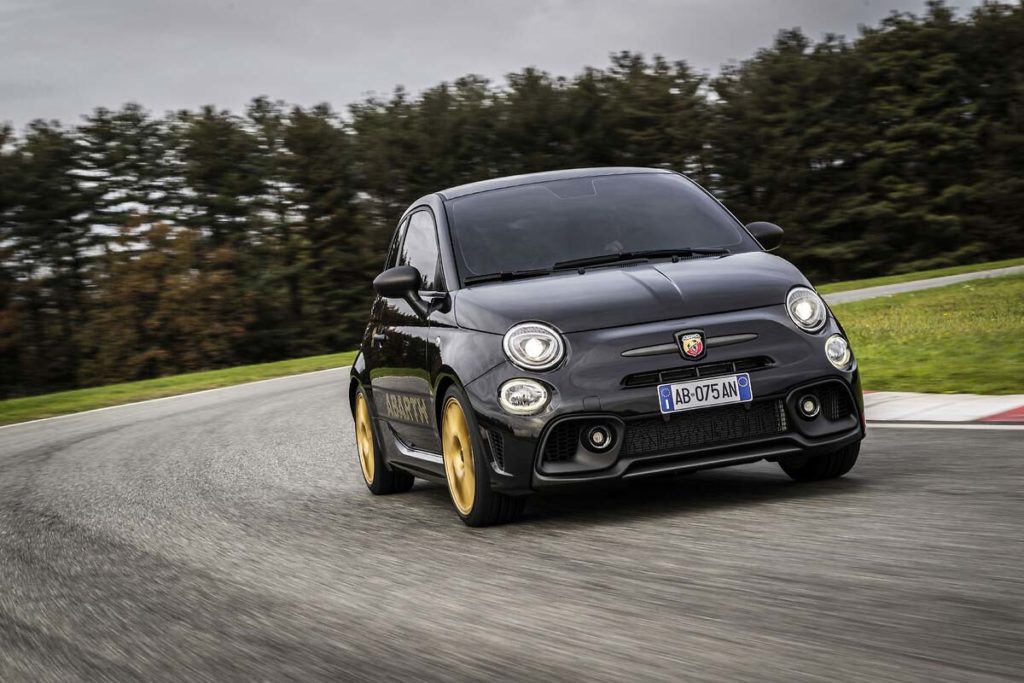
While Fiat has just launched its new Fiat 500 hybrid, produced in Turin, with great fanfare, another question is on everyone's lips: what's going to become of it? Abarth ? The Scorpion brand, once a symbol of accessible sportiness and a loyal community, has been going through an unprecedented crisis for the past two years. And the latest statements from its European boss, Gaetano Thorel, suggest an unexpected turn: a possible return to combustion engines. A scenario that was unimaginable until recently, given Stellantis' determination to impose the 100 % electric.
An electrical strategy that clashes with reality

It's no scoop: Abarth's transition to an electric 100 % range has been a commercial failure. We documented it from July then in october 2025 sales have collapsed. Where the brand still expected to sell close to 10,000 cars in 2024, it is struggling to break the 2,000-unit barrier in 2025. In Europe, only 1,030 Abarths were registered between January and June, compared with 4,867 a year earlier. A drop of almost 80 %.
And this decline has left no market untouched: France, Italy, the UK, Spain and Japan have all seen volumes plummet. The situation is all the more serious since the last thermal Abarths (595 and 695) were withdrawn from the catalog in August 2024. Since then, the brand has relied solely on the Abarth 500e and 600e, whose high prices - €36,900 for the 500e, €44,900 for the 600e - put off most potential buyers.
The malaise of enthusiasts: "We can't put our hands in the engine any more".

This is probably the most striking admission made by Gaetano Thorel to the British media outlet Autocar. According to him, Abarth customers don't recognize themselves in current electric models. Not because they are fundamentally uninteresting, but because they no longer offer what has been the essence of the brand for decades: the possibility of modifying, optimizing and tinkering.
"The Abarth customer wants a combustion engine, not just for the power, but because he buys the car and then modifies it with his own hands," he admits. "On the electric, we can't. They can't put their hands in the engine or play with the fuel. It's a limitation, and the Abarth clubs aren't happy."
Towards an Abarth 500 hybrid... or a technical dead end?

The launch of the new Fiat 500 hybrid is a game-changer. Based on a modified version of the 500e platform, it is powered by a small, atmospheric 1.0 petrol engine producing 65 bhp. Not enough to excite the crowds, of course, but enough to consider bringing a combustion-powered Abarth sports car back to life... in theory.
And this is where Gaetano Thorel's words become particularly revealing. Yes, the platform can handle more power. But no, the current 1.0 engine can never deliver the explosive character that fans expect. Too little power, too linear, too wise. Added to this are heavy technical constraints: the 500e's platform was designed for a compact electric motor, leaving very little room for a larger combustion engine or one requiring a larger cooling system. The technical equation is therefore far from straightforward. But despite these obstacles, the Abarth boss assures us: "we're trying".
A return to petrol... or a desperate attempt to save the brand?

This opening is the first official break with the 100 % electric dogma imposed since 2024. It shows that Stellantis has understood that the current strategy leads straight into the wall. Even the 600e, built on a common base with the Alfa Romeo Junior Veloce, the Lancia Ypsilon HF and the Opel Mokka GSE, fails to seduce. So the question is no longer merely technical, but strategic: is it still worth investing in a new thermal Abarth, given that volumes are currently anecdotal? Could Abarth reintegrate Fiat communications in Europe, as in Latin America where it still survives? Or will the brand simply be sacrificed in a future rationalization of Stellantis?
The announcement does not guarantee the return of the roaring scorpion. But it does confirm that Abarth is finally listening to what customers, clubs and enthusiasts are saying. It's not yet a revival, but it may be the first crack in a seemingly impenetrable electric wall.